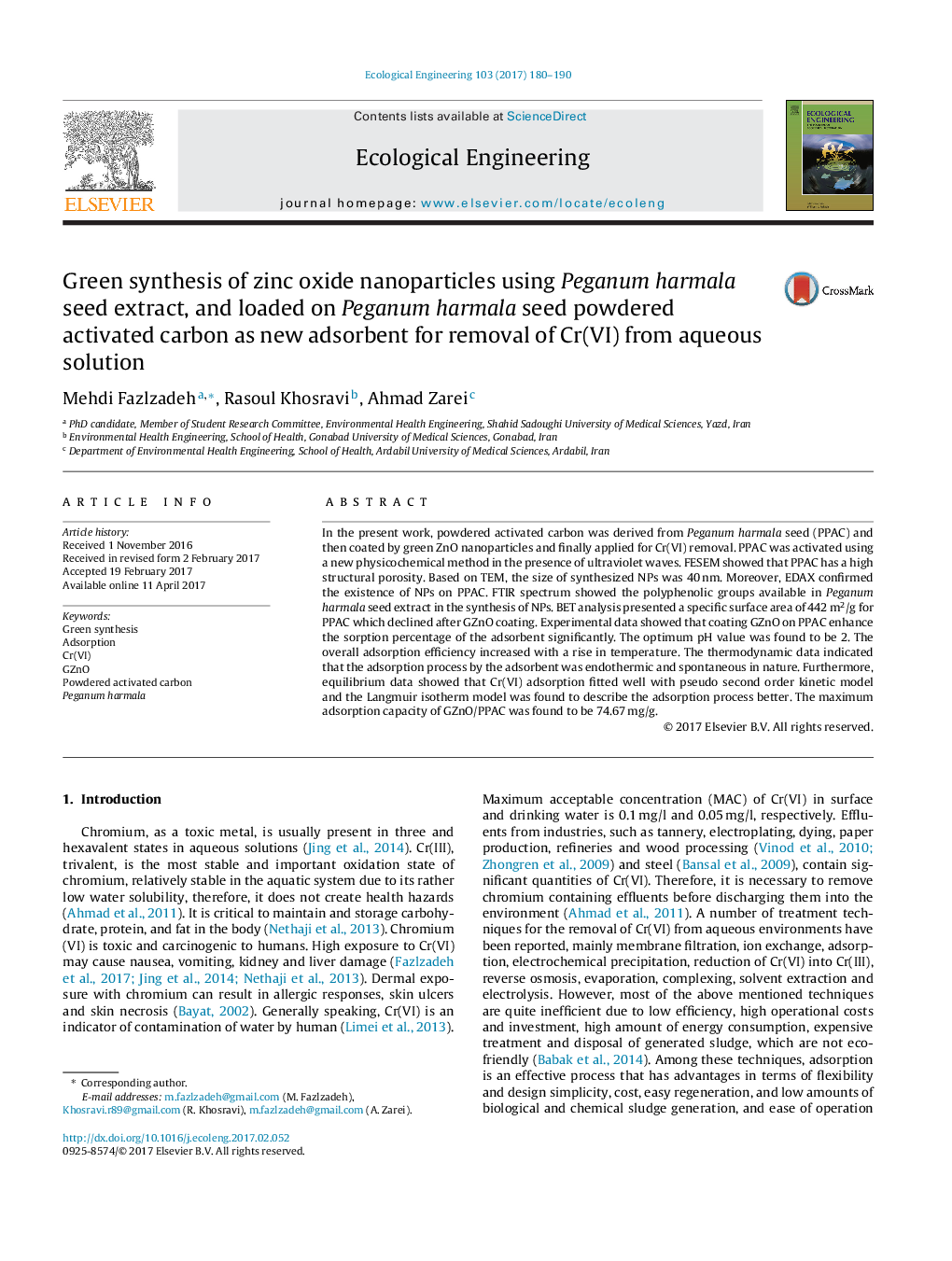| کد مقاله | کد نشریه | سال انتشار | مقاله انگلیسی | نسخه تمام متن |
|---|---|---|---|---|
| 5743577 | 1412315 | 2017 | 11 صفحه PDF | دانلود رایگان |

- Peganum harmala seed showed that is an approved plant for GZnO nanoparticle synthesize.
- The size of synthesized NPs was 40Â nm.
- The BET test showed that Ultrasonic waves are more efficient on PPAC activation.
- Produced PPAC showed high specific surface area of 442Â m2/g.
- Chromium removal was enhanced by GZnO loading on PPAC.
In the present work, powdered activated carbon was derived from Peganum harmala seed (PPAC) and then coated by green ZnO nanoparticles and finally applied for Cr(VI) removal. PPAC was activated using a new physicochemical method in the presence of ultraviolet waves. FESEM showed that PPAC has a high structural porosity. Based on TEM, the size of synthesized NPs was 40Â nm. Moreover, EDAX confirmed the existence of NPs on PPAC. FTIR spectrum showed the polyphenolic groups available in Peganum harmala seed extract in the synthesis of NPs. BET analysis presented a specific surface area of 442Â m2/g for PPAC which declined after GZnO coating. Experimental data showed that coating GZnO on PPAC enhance the sorption percentage of the adsorbent significantly. The optimum pH value was found to be 2. The overall adsorption efficiency increased with a rise in temperature. The thermodynamic data indicated that the adsorption process by the adsorbent was endothermic and spontaneous in nature. Furthermore, equilibrium data showed that Cr(VI) adsorption fitted well with pseudo second order kinetic model and the Langmuir isotherm model was found to describe the adsorption process better. The maximum adsorption capacity of GZnO/PPAC was found to be 74.67Â mg/g.
160
Journal: Ecological Engineering - Volume 103, Part A, June 2017, Pages 180-190